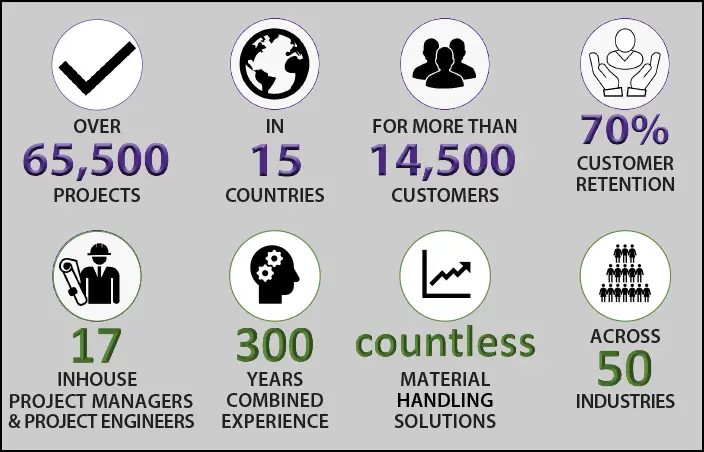Double Deep Pallet Racking vs. Standard Selective Racking
Article Updated: 01/04/2022 Back to Blog
The most commonly used type of pallet rack system in distribution centers is selective rack. This is a versatile system that suites a wide variety of operational features.
There are options within selective rack solutions to make this type of system best suite your space, SKUs, and picking processes. One of these options is double deep pallet racking.
Read below to understand the difference compared to standard selective pallet racking and which may better suite your operation.
What is Double Deep Racking?
Double deep pallet racks consist of two standard selective racks set up back-to-back, creating the double deep pallet storage system. These double deep racks are commonly designed to be set up against a wall or in connection with another double deep section behind it. Double-deep selective rack provides a last-in, first-out product flow.
As a comparison, a standard selective rack system is a 1-deep rack system with 12′ or so aisles. This rack configuration provides first-in, first-out selectivity. This is a highly selective system with lower density than with double deep selective racking.
Standard Selective Rack Layout vs. Double-Deep Selective Rack Layout
The image in this section shows a comparison of standard selective vs. double-deep selective in the same space. Both systems are 5-levels high.
You see that the standard selective rack yields 3,000 pallet positions in 15 rows of rack with 8 forklift aisles. The double-deep selective rack yields 3,910 pallet positions in 20 rows of rack with 6 forklift aisles.
Based on this, it may seem like double deep racking is advantageous over standard, since you’ll gain pallet positions. But, this doesn’t always mean it’s the right fit. Keep in mind that making the switch to double-deep will decrease the number of pick faces, as evident in the number of aisles.
This becomes a factor if, for example, you only have one pallet of each SKU, then it doesn’t make sense to convert to double-deep. Why? If you have to retrieve a SKU that’s placed behind a pallet of a different SKU, you’ll have to move that first pallet in order to retrieve it, and therefore operational efficiency is lost. You don’t want to have to move the tortilla chips to get to the potato chips.
But, if you have multiple pallets of the same SKU, would benefit from higher density, and are able to sacrifice some selectivity, then this may be right for you.
Do You Currently Have Standard Selective Rack But Want To Make A Switch To Double Deep Rack?
If you currently have standard selective rack but feel that double-deep selective racking would be more beneficial to you, then you’ll be happy to know that you are able to convert.
One thing to factor in when considering this conversion is that a standard forklift won’t work with a double-deep rack system. It won’t be able to reach the second pallet position. You’ll need a double-reach or deep reach lift truck to load and unload pallets from this system.
If that’s doable, then you’ll want to go to a storage system integrator, such as REB Storage Systems (here’s how you can contact us). The storage system integrator can redo your layout to be double-deep. Moving forward with it will require unloading the products, dismantling the existing rack, reinstalling, and possibly adding on.
The majority of your existing selective pallet rack system will be utilized when converting to a double-deep racking system. This of course is dependent on the condition of your current rack.
In order to keep your company operating when converting the system, more than likely you’ll want to do it in phases.
Are You Considering Double Deep Racking?
REB is highly knowledgeable and experienced in designing, project managing, and installing double deep rack systems. As a systems integrator, we’ll work with you to provide a turnkey system. From design, products procurement, subcontractor management, install, and permitting support, REB handles it all for you.
REB has a talented team of in-house project managers and project designers, all highly experienced in the material handling industry. We’ll work with you to make sure that your system is the best fit for your operation, installed and completed on-time and within budget.
We’d appreciate the opportunity to help you further, whether that be more information or a quote. Fill in the contact form on this page or call us at (800) 252-5955 to get in touch with a REB representative.
Share this post:
Share this post:
Submit Your Inquiry
Testimonials
Blog Topics By Category
Blog Topics By Industry




